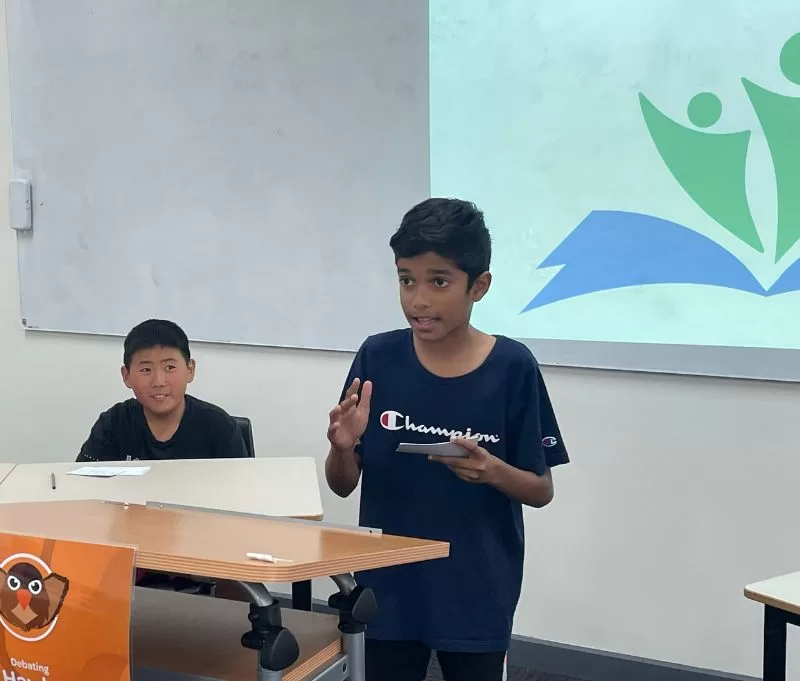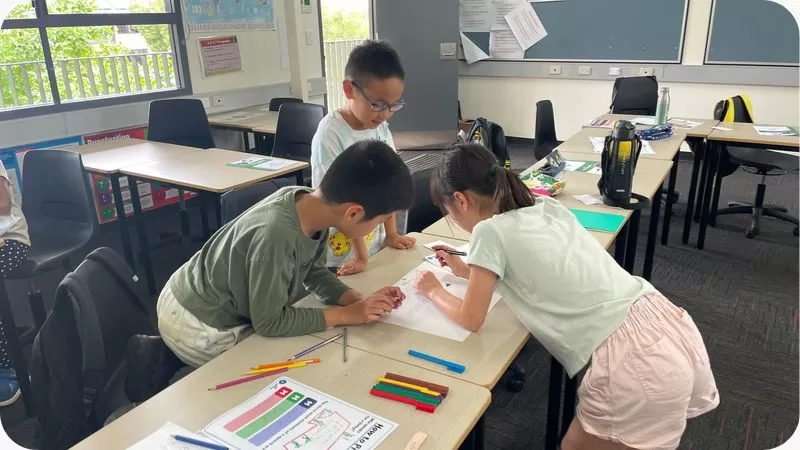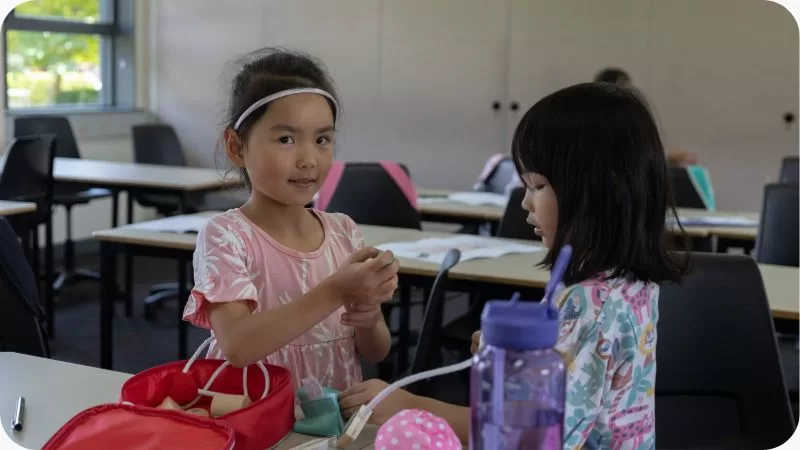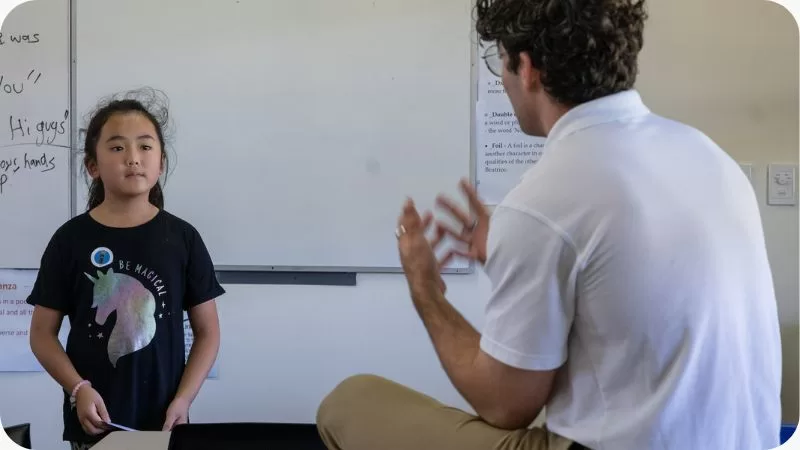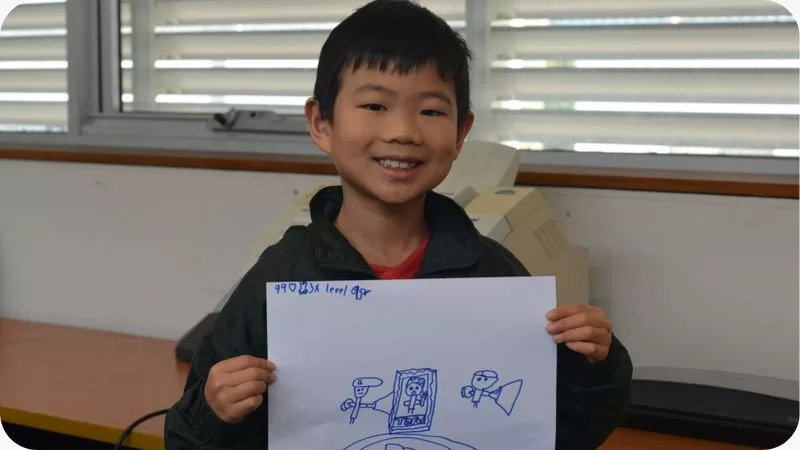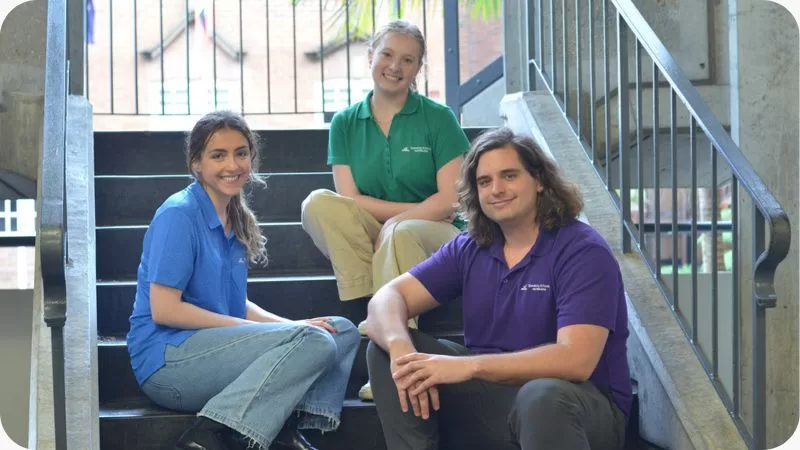Eight Ways to Help Your Shy Child Overcome Their Fear of Public Speaking
2 February 2023
It’s only natural that as a parent, you want your children to grow into confident adults who can express their thoughts and ideas in front of an audience without any fear.
Getting the better of this anxiety also has positive ramifications for other areas in life, such as school, social situations, and eventually life after school.
But for shy children, public speaking can be really hard, and standing up in front of a crowd could be one of the scariest experiences they can imagine. Thankfully, there are lots of ways you can help your child overcome their fear of public speaking.
Let’s explore eight effective tips and strategies to help kids find their inner confidence.
Whilst reading, make sure to keep in mind that everyone is different, so your child may resonate with some of these public speaking tips more than others!
1. Pick a topic that shows off your public speaking skills
Before implementing different strategies, it is important to ascertain what your goals are and what you are hoping to achieve. Ask yourself:
What are my child’s strengths?
What are my child’s interests?
How can they translate into an effective and engaging presentation?
Your child can start by pretending to be talking to a friend about a shared passion or interest, ideally as if they were in everyday conversation. Most people in an audience identify with a speaker who is interested in the material they are discussing as part of the speech – and has the body language and passion to speak up about it in an engaging manner – so a fantastic way to start is to ensure that kids speak about topics that interest them.
You can learn more about picking the perfect topic and how to start speeches in our other blogs!
2. Start small in a comfortable environment
Once your child has chosen their topic material, start small and build up their public speaking capabilities over time.
Your child can practice speaking in front of a small audience before tackling a larger crowd – the fewer faces (and the friendlier the faces), the less daunting it is to practice your public speaking skills in front of a crowd, no matter the size.
Invite a few family members or friends for dinner and discuss things that actively interest your child – pick an idea and focus the discussion on it, giving them lots of opportunities to speak. If they’re feeling shy, actively encourage them to talk with questions that stay on point.
Alternatively, you can also use things like board games (Articulate for Kids is a good one) where children are required to engage with spoken language at home and are forced to speak up to participate in the activity.
Not only will these give your child the opportunity to practice without any added pressure in a relatively stress-free environment, but they will also give them the opportunity to practice their social skills and help overcome any shyness they may have in that department as well!
Finally, you will also potentially want to debrief later on, and mention quietly to them how well they did, or that you enjoyed listening to them express themselves, or how glad you are they got involved in the discussion – this positive reinforcement, especially if they get a sense that you’re being genuine about it, can make a massive difference to their confidence levels and can go a long way to overcoming shyness.
3. Discuss Their Fears of Public Speaking
Talking about fears and anxieties is often the first step toward overcoming them. This might range from simple stage fright to glossophobia more generally.
You may potentially want to ask your child what makes them nervous about speaking in public and encourage them to talk through their worries with you and other members of the family.
Reassure them that everyone gets scared sometimes – even you – but by facing their fears head-on, they can become more confident in their abilities as a speaker. As we’ll look at below, regularly practising your public speaking skills can make a real difference to your confidence levels, especially for someone who is innately quite shy.
You can also take this further, and discuss what they think will happen when they get up to present – what is their worst-case scenario? Most of the time, it involves their audience laughing at them – if this is the case, remind them that most people in the crowd, especially other kids, understand what it’s like to feel nervous (and many know what it feels like to be shy) and that they are almost always on the speaker’s side!
During these discussions, it is important to empathise and show your child that even a shy person can be confident when public speaking. Nervous energy can be advantageous when overcoming shyness, especially when redirecting that energy into a heartfelt speech – public speakers are much more engaging to watch someone speak with animated body language and power behind their words!
4. Lots and lots of practice
Like almost anything and everything in life, practice makes perfect. There’s a good reason it’s an age-old saying!
The more your shy child practices and refines their public speaking skills, the more they grow used to it, even if it isn’t something that comes naturally to them. Like any skill, practising once or twice isn’t going to make a huge difference, especially for shy people. Instead, the focus should be on presenting to a group regularly, receiving feedback, and then giving the speech another go. It is only once students have a significant amount of public speaking practice that it becomes second nature and instils a newfound self-confidence.
That said, speeches often pop up in our lives when we least suspect, and you may not feel ready to give a talk to your peers – what should your child do then?
Set aside time to have them practice in front of a small group (ideally family members and a friend – people they’re comfortable with). If their shyness prevents even this, you may want to offer them a mirror (which is less effective) or to film themselves (which is more effective, as they can look back on it later).
The important thing is to ensure they deliver their presentation to you several times before they go public. When practising with you or another family member (or even reflecting on a video they took of themselves), it is an excellent opportunity for them to refine things like eye contact, voice volume, body language, and even nonverbal communication – it can even provide a chance to add more advanced elements to their speech, such as inclusive language and rhetorical questions.
You can even get them to run through their presentation without palm cards or notes in a conversational tone – not only is this an example of how to improve speaking manner, but it also means that they will learn how to keep on message even if they forget elements of their speech.
Make sure that your child has plenty of time to prepare for any presentations thoroughly, so they feel more comfortable when it comes time to deliver them in front of a less familiar audience. Speak with them about the ideas and topics they would like to include in their speech, and the message they want to convey so that they know their material almost (but never totally) by heart. This is a valuable tactic so that they can maintain a conversational tone instead of reading off palm cards word for word.
Remember, practice makes perfect!
5. Visualise Success
Visualisation is one of the most powerful tools we have for calming our nerves before speaking in public. Whilst this may not work for younger kids, it is an increasingly effective technique as students grow older.
Have your child close their eyes and visualise themselves delivering a fantastic speech that elicits applause from the audience afterwards. Sit with it for a few moments. How does it make them feel?
This technique, which derives from mindfulness practice, is a proven method for helping to build confidence and reduce feelings of anxiety and shyness before speaking publicly. Believe it or not, your child is more likely to deliver an engaging presentation when they imagine being happy while speaking – putting on a smile can make you smile naturally!
One part of visualising success is remembering that the audience is not judging but instead listening intently to the speaker’s ideas and message. Many children (and even adults) start off feeling nervous when they first give presentations, so most of those in the crowd will know precisely what it feels like to be shy.
But what if your child makes a mistake or uses the wrong words? Most of the time, the audience won’t even notice. Think about a concert pianist playing a brand new piece of music the audience has never heard. What would happen if they played the wrong note? Unless they drew attention to it and insisted that they start again, almost certainly nothing – they just continue as if nothing went wrong, and the audience is none the wiser. It is the same for public speaking – particular words don’t matter if you stay on message!
6. Slow Down & Breathe
Often it isn’t just the words that matter when you speak – it is also the negative space and where one takes a rest that makes a massive difference to how speeches are perceived.
Remind your child not to rush through their presentation – pausing between sentences (and especially after an important point) helps break it up into smaller chunks which will make it easier for them to manage (and for their audience to understand).
Additionally, breaking up the flow allows your child to present a clearer message, allowing the audience to focus more on an important idea and follow the presentation better.
You and your child can practice dividing your speech into sections bit by bit. One helpful way of doing this is to use a coloured marker and leave dots wherever you want to take a breath – this can also act as an opportunity to look up when you talk, allowing you to focus in on your audience as they watch your speech.
Additionally, taking deep breaths throughout (and especially just before your begin your talk) will help regulate your breathing patterns and lower your heart rate, which can reduce feelings of panic or anxiety during the speech itself.
One way you can work on this is by practising breathing exercises before public speaking – watch the video below for some specific techniques they might be able to use to help with your pausing! Whilst it seems very simple, a few deep breaths can allow better focus and keep the anxiety away.
7. Celebrate Small Victories
Every small victory should be celebrated!
Encourage your child whenever they take on new challenges or experience success when overcoming obstacles within their journey towards becoming a confident public speaker.
For example, did they put up their hand in class today? Fantastic! Did they speak with a person they wouldn’t normally? Brilliant! Did they express their opinion even though they were feeling nervous? Awesome!
Acknowledging these victories lets them know that you are proud of how far they’ve come already and serves as motivation for pushing forward further still. Positive reinforcement is imperative to ensure that your child can gain a sense of satisfaction from their speaking ability, and in turn, will give them the push to continue their journey in becoming confident speakers.
But what if they didn’t do any of those things? Negative reinforcement – even subtle negative reinforcement – won’t get near the same results as constructive and supportive feedback. Rather than criticising, it is much more important to be understanding of what happened, discussing why that was the case, and encouraging them with proactive strategies to ensure that they’re just that little more comfortable when they’re next talking to a person or in front of an audience.
Positivity in these circumstances will not only help your child when they make their next speech, but also boost their confidence in their school life and social life as well.
8. Take advantage of resources available to shy people
Public speaking is, thankfully, a skill that can be taught.
Participating in programs (for example, those offered by Speaking Schools Australasia) is a great way for introverts to receive guidance on how best to tackle public speaking tasks, as well as gain support from their peers in the same situation.
These types of courses are tailored towards people who may be feeling uncomfortable when public speaking and can help to build confidence by providing an environment and audience where everyone is supported regardless of their background or communication skills.
By providing tips, tricks and a welcoming audience for all speakers, speakers of all ages can take a stand and create speeches that have a strong message and can be delivered with power.
You can hear more about the programs Speaking Schools Australasia offers (and how they help speakers develop their communication and speech-crafting skills) on our website.
Putting public speaking plans into action
Public speaking can be a daunting prospect for young people who are new to it.
But with patience, determination, and practice, even shy people can gradually grow to overcome fear and anxiety, and become confident public speakers when they next need to give a speech to an audience.
So what are you waiting for? You never know, public speaking could even become one of your child’s favourite activities.
Want more public speaking tips and tricks?
SSA is on a mission to raise awareness on how to deliver effective and engaging speeches to an audience of any size.
We believe that every child has an inner speaker, that great communication skills can be taught and that any student – regardless of how shy – can find their voice and create a speech that shares their feelings on any given topic.
For further public speaking tips, make sure to check out the other blog pages on our website or videos on our YouTube – you can learn even more about overcoming stage fright in the below video!



